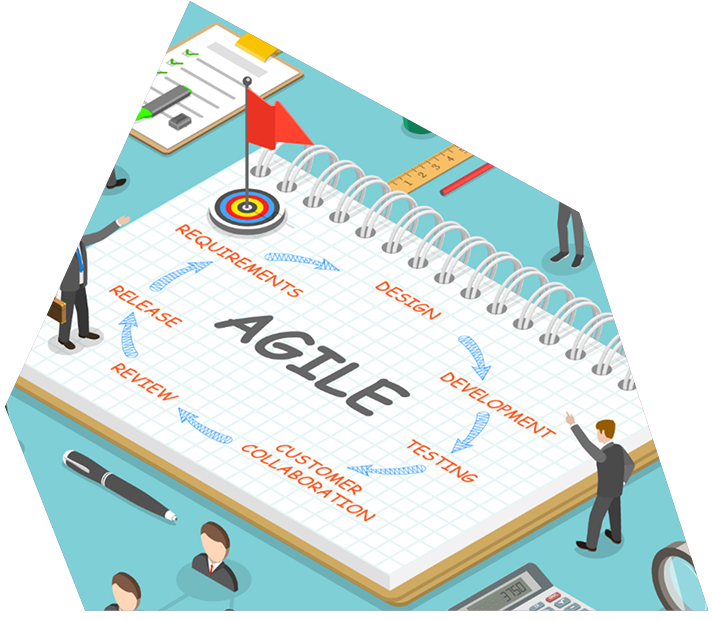Is Agile the Solution in Project Management?

Project management requires precise and strategic decision-making where every action is significant, and the outcome determines the project’s success or failure. In this complex interplay of deadlines, budgets, and deliverables, Agile methodology has become increasingly prominent. Agile – is it truly the holy grail of project management?
Agile, known for its iterative approach and emphasis on team collaboration, appears to be perfectly suited for the dynamic, rapidly changing environment of modern business. Envision a team of developers collaborating smoothly, rapidly achieving milestones with the precision of a well-oiled machine. It sounds ideal, doesn’t it?
But like any tool in the toolbox, Agile isn’t a one-size-fits-all solution. It’s more like that versatile Swiss army knife – handy in many situations, but not always the best choice. Let’s break it down.
Firstly, Agile thrives in environments where project requirements are flexible and ongoing feedback is possible. This makes software development an ideal candidate for Agile, due to the ever-evolving user needs and technological advancements. However, Government projects usually involve strict regulations, detailed specifications, requirements, and long-term planning. This means they can be less suited to the flexibility and fluidity of Agile methodologies.
Then there’s the human factor. Agile relies heavily on empowered, autonomous, self-organising teams – the dream team if you will. But if your team members are more like a dysfunctional family than a cohesive unit, Agile’s emphasis on collaboration can quickly turn into disarray and potentially chaos rather than productivity. Sometimes, a more structured methodology and approach like Waterfall might be needed to keep everyone on track.
Budget constraints can also change the adaptability of Agile. Agile projects often operate in a world of uncertainty, which can involve unpredictable costs. For organisations with fixed budgets, multiple stakeholders and high-stake outcomes, the predictability of traditional project management methodologies might offer a safer bet.
We can’t dismiss Agile as just another buzzword – it does have undeniable strengths. Its ability to deliver value early and continuously is like a breath of fresh air in a world accustomed to long, drawn-out projects. The transparency it brings, with regular demonstrations and retrospectives, fosters a culture of accountability and continuous improvement.
Moreover, Agile isn’t a rigid doctrine carved in stone. It’s a mindset, a philosophy that promotes innovation, experimentation and learning from failures. Even partial adoption of Agile principles – like breaking projects into smaller, manageable chunks – can yield tangible benefits.
So, is Agile the best solution in project management? Well, it depends. Like a seasoned chef selecting the perfect spice for a dish, project managers must assess the unique ingredients of each project and choose the methodology that best suits their needs.
Here at Synergy Group, whether you’re Team Agile, Team Waterfall, or somewhere in between, our goal remains the same: we adapt our approach to deliver value in your context. If you're managing a crucial project or program and are uncertain about the best approach, we invite you to have a conversation with Synergy Group.